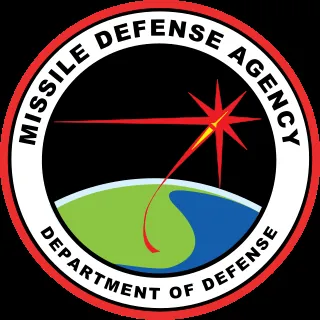Missile Defense Agency
The Missile Defense Agency (MDA) is a component of the United States government's Department of Defense responsible for developing a comprehensive defense against ballistic missiles. It had its origins in the Strategic Defense Initiative (SDI) which was established in 1983 by Ronald Reagan and which was headed by Lt. General James Alan Abrahamson. Under the Strategic Defense Initiative's Innovative Sciences and Technology Office headed by physicist and engineer Dr. James Ionson, the investment was predominantly made in basic research at national laboratories, universities, and in industry. These programs have continued to be key sources of funding for top research scientists in the fields of high-energy physics, advanced materials, nuclear research, supercomputing/computation, and many other critical science and engineering disciplines—funding which indirectly supports other research work by top scientists, and which was most politically viable to fund from appropriations for national defense. It was renamed the Ballistic Missile Defense Organization in 1993, and then renamed the Missile Defense Agency in 2002. The current director is U.S. Navy Vice Admiral Jon A. Hill.

Some of the key events about Missile Defense Agency
- 1983Successfully intercepted a mock warhead in space during a test of the Homing Overlay Experiment
- 1983The Strategic Defense Initiative was criticized as technologically unfeasible and potentially destabilizing to nuclear deterrence
- 1999Two National Missile Defense intercept tests failed, raising doubts about the system's effectiveness
- 2000A review panel found that the National Missile Defense program had been rushed and based on unrealistic expectations
- 2001Conducted the first successful test intercept of an intercontinental ballistic missile target
- 2002The Missile Defense Agency was exempted from normal procurement oversight and reporting requirements, leading to concerns about transparency
- 2004Activated the initial elements of the Ground-Based Midcourse Defense (GMD) system
- 2004The Ground-Based Midcourse Defense system was activated despite not completing its planned test program
- 2005A Government Accountability Office report highlighted significant cost overruns and schedule delays in missile defense programs
- 2006Completed the first successful test of the Terminal High Altitude Area Defense (THAAD) system
- 2008Successfully intercepted a non-functioning satellite using a modified Standard Missile-3
- 2008A failed satellite intercept attempt raised questions about the capabilities of the Aegis Ballistic Missile Defense system
- 2010A major flight test of the Ground-Based Midcourse Defense system failed, continuing a pattern of test failures
- 2011Demonstrated the first successful intercept using the European Phased Adaptive Approach system
- 2012The National Research Council criticized the agency's approach to European missile defense as wasteful and ineffective
- 2013Conducted a successful intercept test of the Ground-based Midcourse Defense (GMD) system
- 2016A report revealed that the agency had not demonstrated that its Ground-Based Midcourse Defense system was capable of defending the U.S. homeland
- 2017Successfully intercepted an ICBM-class target for the first time using the Ground-based Midcourse Defense system
- 2019Completed a successful salvo engagement test of two Ground-Based Interceptors against an ICBM target
- 2020Conducted the first intercept test of an ICBM-representative target using a Standard Missile-3 Block IIA
Disclaimer: This material is written based on information taken from open sources, including Wikipedia, news media, podcasts, and other public sources.





























